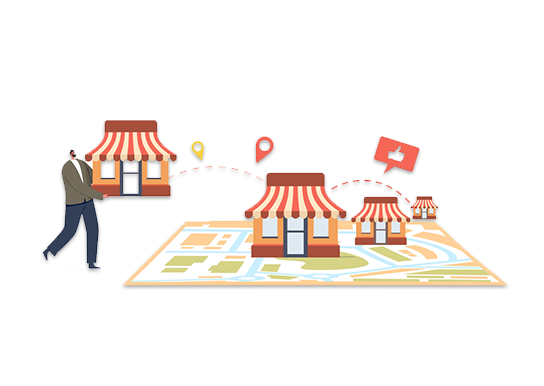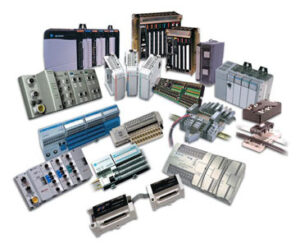How Restaurant POS Software is Enhancing Contactless Dining
The restaurant industry has witnessed a significant transformation in the past few years, especially with the rise of digital solutions...

The restaurant industry has witnessed a significant transformation in the past few years, especially with the rise of digital solutions and changing consumer behaviors. One of the most notable shifts has been the increasing demand for contactless dining, spurred by health concerns, technological advancements, and customer preferences for convenience. At the heart of this transformation is Restaurant POS software, which plays a crucial role in streamlining operations, enhancing customer experience, and improving overall efficiency.
Contactless dining is no longer just a trend but a necessity. From ordering food via QR codes to making seamless payments through mobile wallets, Restaurant POS software has evolved to cater to the growing need for touch-free interactions. This article explores how restaurant POS systems are enhancing contactless dining, the key features enabling this transformation, and the benefits for both restaurant owners and customers.
The Evolution of Contactless Dining
Before delving into the role of POS software in contactless dining, it’s essential to understand the shift that has taken place in the dining industry. Traditionally, dining out involved face-to-face interactions with servers, physical menus, and cash transactions. However, the COVID-19 pandemic accelerated the adoption of contactless solutions, making them a preferred and, in many cases, mandatory option.
Today, customers expect minimal contact while dining out. Restaurants have responded by integrating digital solutions that reduce human interaction without compromising service quality. This shift has given rise to modern Restaurant POS software that facilitates online ordering, contactless payments, digital menu displays, and automated order management.
Key Features of Restaurant POS Software Enhancing Contactless Dining
Restaurant POS software offers a wide range of features designed to support contactless dining. Some of the most impactful features include:
1. QR Code-Based Ordering
One of the primary ways POS software supports contactless dining is through QR code-based ordering. Instead of handling physical menus, customers can scan a QR code on their table using their smartphone to access a digital menu. They can browse the menu, customize their orders, and place them directly from their devices. This feature minimizes the need for face-to-face interactions with servers and speeds up the ordering process.
2. Online and Mobile Ordering Integration
Restaurant POS systems are integrated with online and mobile ordering platforms, allowing customers to place orders remotely. Whether they are dining in, ordering takeout, or opting for delivery, mobile-friendly POS software ensures a seamless ordering experience. This feature is especially beneficial for restaurants that operate in both physical and virtual settings.
3. Contactless Payment Solutions
A major component of contactless dining is the ability to pay without cash or physical cards. Restaurant POS software enables contactless payments through various methods, including:
- Mobile wallets (Apple Pay, Google Pay, Samsung Pay)
- NFC-enabled cards
- Online payment gateways
- Cryptocurrency payments (for forward-thinking establishments)
By reducing the need for cash transactions, POS software ensures a more hygienic and efficient checkout process.
4. Tableside Ordering and Payment
Modern POS systems empower servers with handheld devices that allow tableside ordering and payment processing. This eliminates the need for physical receipts and manual order taking, ensuring a smooth and efficient dining experience. Customers can review their bills on digital devices and complete their transactions without handling paper receipts.
5. Integration with Self-Service Kiosks
Self-service kiosks are becoming increasingly popular in quick-service and fast-casual restaurants. Restaurant POS software integrates with these kiosks, allowing customers to place their orders, customize their meals, and pay independently. This self-service model not only reduces wait times but also minimizes direct interactions with staff.
6. AI-Powered Chatbots and Virtual Assistants
Many restaurant POS systems are incorporating AI-powered chatbots and virtual assistants to enhance contactless customer service. These bots can assist customers with menu recommendations, answer FAQs, and facilitate orders through voice or text commands. AI-driven customer support ensures a seamless experience while reducing the workload for restaurant staff.
7. Inventory and Kitchen Management Automation
Contactless dining extends beyond customer interactions. Restaurant POS software automates inventory management and kitchen operations, ensuring that orders are processed efficiently with minimal human intervention. Real-time inventory tracking helps restaurants manage stock levels, reducing waste and optimizing resources.
Benefits of Contactless Dining with POS Software
The integration of Restaurant POS software in contactless dining offers numerous benefits for both restaurant owners and customers. Some of the key advantages include:
For Restaurant Owners
- Increased Efficiency: Automation of order taking, payment processing, and kitchen management reduces manual tasks, allowing staff to focus on service quality.
- Cost Savings: With digital menus and automated systems, restaurants save on printing costs, labor expenses, and operational inefficiencies.
- Enhanced Customer Insights: POS software collects valuable data on customer preferences, helping restaurants personalize marketing strategies and improve menu offerings.
- Improved Hygiene and Safety: Reducing physical contact with menus, cash, and receipts minimizes the risk of virus transmission, creating a safer environment for customers and staff.
- Faster Turnaround Times: Contactless ordering and payment solutions streamline the dining process, reducing wait times and increasing table turnover rates.
For Customers
- Convenience: Customers enjoy the flexibility of ordering and paying at their own pace, without the need to wait for servers.
- Personalization: AI-driven recommendations and digital interfaces make it easier for customers to customize their orders.
- Enhanced Safety: Contactless interactions reduce exposure to germs and enhance overall dining safety.
- Seamless Experience: From browsing digital menus to making cashless payments, the entire dining journey becomes more efficient and enjoyable.
Future Trends in Contactless Dining and POS Systems
As technology continues to evolve, the future of contactless dining will be shaped by further innovations in Restaurant POS software. Some emerging trends include:
- Voice-Activated Ordering: Integrating voice recognition technology into POS systems will allow customers to place orders using voice commands.
- Augmented Reality (AR) Menus: Restaurants may adopt AR menus that provide interactive and immersive experiences, helping customers visualize their meals before ordering.
- Blockchain-Based Payments: The use of blockchain technology for secure and transparent transactions could further revolutionize contactless payments.
- Advanced AI Analytics: AI-powered analytics will provide deeper insights into customer behavior, helping restaurants optimize their operations and offerings.
- IoT-Enabled Smart Tables: Smart tables equipped with touchscreens and interactive features will redefine the contactless dining experience.
Conclusion
The rise of contactless dining has reshaped the restaurant industry, and Restaurant POS software has been instrumental in this transformation. By enabling QR code-based ordering, mobile payments, AI-driven customer support, and automated kitchen management, POS systems enhance efficiency, safety, and convenience. As technology continues to advance, restaurants that embrace these innovations will thrive in the competitive landscape, offering superior dining experiences to their customers.
Investing in a robust POS system is no longer an option but a necessity for modern restaurants looking to stay ahead in the era of digital dining. By leveraging the power of contactless solutions, restaurants can create a seamless and efficient dining experience that meets the evolving expectations of today’s tech-savvy consumers.





